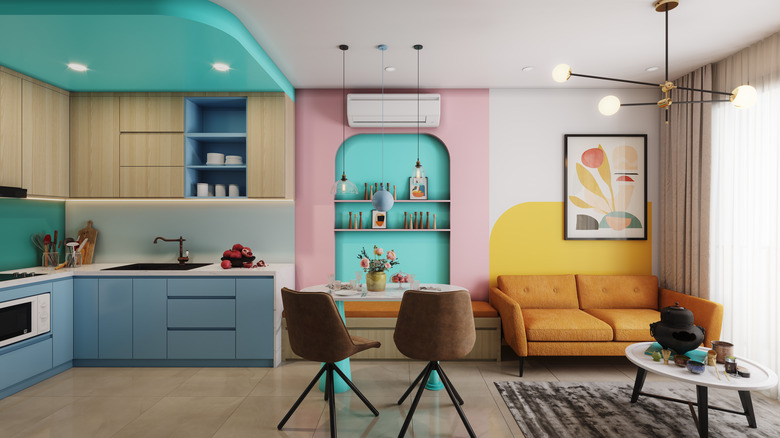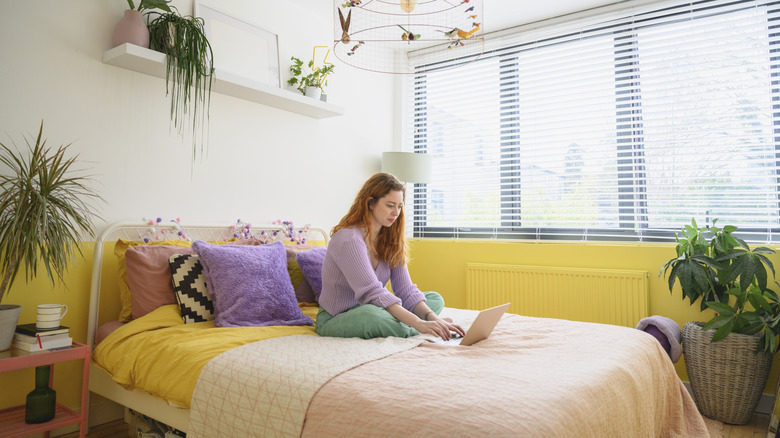The Over-Styled Decor Trend Queer Eye's Bobby Berk Just Can't Get Behind
While maximalism in home décor can be bold and expressive, it also presents some potential challenges. It's probably why Bobby Berk, the designer on "Queer Eye," wouldn't try it himself. As a minimalist at heart, this style is naturally incompatible with him. "While I do think the "maximalist" look with a lot of colors, prints, and patterns works in a lot of spaces, I prefer something a bit more organized and subdued," he shared with The Spruce. "I would constantly have the urge to pair [sic.] things down (and put things away!) if I lived in maximal space."
These concerns with maximalism are common. It can be hard to deal with the visual clutter, lack of balance, adaptability, and maintenance that may come with adopting this style. If you really want the vibrant and expressive nature of maximalism in your home, balance and harmony will be key to tying everything together and making it look good to the eye.
What is maximalism?
Maximalism in home décor and design is an aesthetic style that embraces boldness, extravagance, and abundance. Unlike minimalism, it emphasizes an eclectic mix of patterns, colors, textures, and objects to create visually vibrant spaces. Maximalist interiors are all about exuberance and excess when it comes to design. Some elements of this style are rich colors, various patterns and textures, and a mix of furniture styles, eras, and influences. According to Bobby Berk, some people are drawn to maximalism for the "comfort and layered look" that it offers.
There are hardly any limits to the maximalism trend; various ideas and concepts can come together to create a unique and diverse environment. This free range of self-expression is a big part of why people love it so much. It encourages the reflection of the homeowner's personality and interests in a playful and exciting way. It also allows people to proudly embrace sentiments and memories through objects. Ultimately, maximalist décor sees a strong sense of self as a great approach to decorating a home.
Potential problems with maximalism
Maximalist décor typically needs a lot of space to accommodate the various objects, furniture, and décor pieces. This means that smaller or more compact homes will automatically feel cramped and uncomfortable, while bigger homes may not feel as spacious as they actually are. Another potential problem with maximalism is that it involves a lot more time and labor to go into the cleaning and maintenance. This style is also based mainly on trends, which means that design elements can get dated quickly, and there will always be demands on your wallet and your time to keep up.
Because maximalism often involves layering multiple elements, it's easy to experience visual clutter and cause an overwhelming feeling in the home. It is also difficult to strike a balance among all the very distinct, unique pieces in the space, so it can be unsettling when there's a lack of cohesion, especially for guests. Unlike the quiet luxury trend, which prioritizes calm and centeredness in the home, maximalism causes sensory overload. Some might see minimalism — the extreme opposite — as boring. But Bobby Berk doesn't think it has to be. He suggests using texture-rich materials and accessories as a great way to keep minimalist décor interesting. According to him, they "add a touch of personality to this subdued style and truly bring the look to life," per Bobby Berk.


